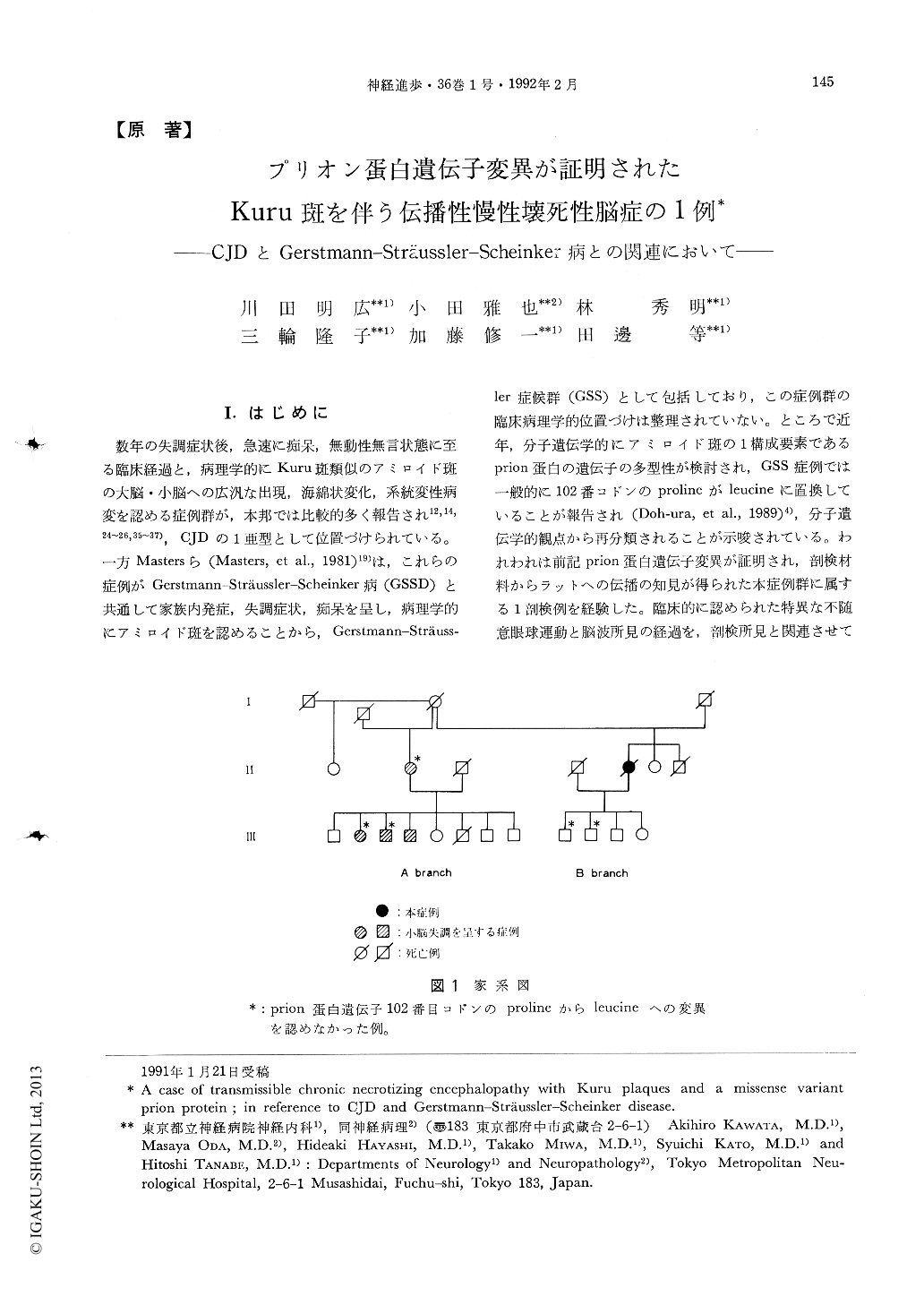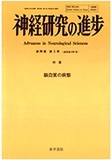Japanese
English
- 有料閲覧
- Abstract 文献概要
- 1ページ目 Look Inside
I.はじめに
数年の失調症状後,急速に痴呆,無動性無言状態に至る臨床経過と,病理学的にKuru斑類似のアミロイド斑の大脳・小脳への広汎な出現,海綿状変化,系統変性病変を認める症例群が,本邦では比較的多く報告され12,14,24~26,35~37),CJDの1亜型として位置づけられている。一方Mastersら(Masters, et al.,1981)19)は,これらの症例がGerstmann-Sträussler-Scheinker病(GSSD)と共通して家族内発症,失調症状,痴呆を呈し,病理学的にアミロイド斑を認めることから,Gerstmann-Sträussler症候群(GSS)として包括しており,この症例群の臨床病理学的位置づけは整理されていない。ところで近年,分子遺伝学的にアミロイド斑の1構成要素であるprion蛋白の遺伝子の多型性が検討され,GSS症例では一般的に102番コドンのprolineがleucineに置換していることが報告され(Dohura, et al.,1989)4),分子遺伝学的観点から再分類されることが示唆されている。われわれは前記prion蛋白遺伝子変異が証明され,剖検材料からラットへの伝播の知見が得られた本症例群に属する1剖検例を経験した。臨床的に認められた特異な不随意眼球運動と脳波所見の経過を,剖検所見と関連させて考察を行なったので報告する。
The patient was a 73-year-old woman. Her sister by a different father and the sister's three children have been known to have progressive cerebellar ataxia without dementia.
In 1970, at the age of 57, she noticed unsteadiness of standing. At the age of 63, she developed dysesthesia in the distal lower limbs and ataxic gait. In 1980 neurological examinations revealed ataxic dysarthria, ataxic gait, and hyperreflexia in the upper limbs. In addition, she had weakness and hyporeflexia in the lower limbs with positive Babinski's signs, and glove and stocking type sensory impairment.

Copyright © 1992, Igaku-Shoin Ltd. All rights reserved.


